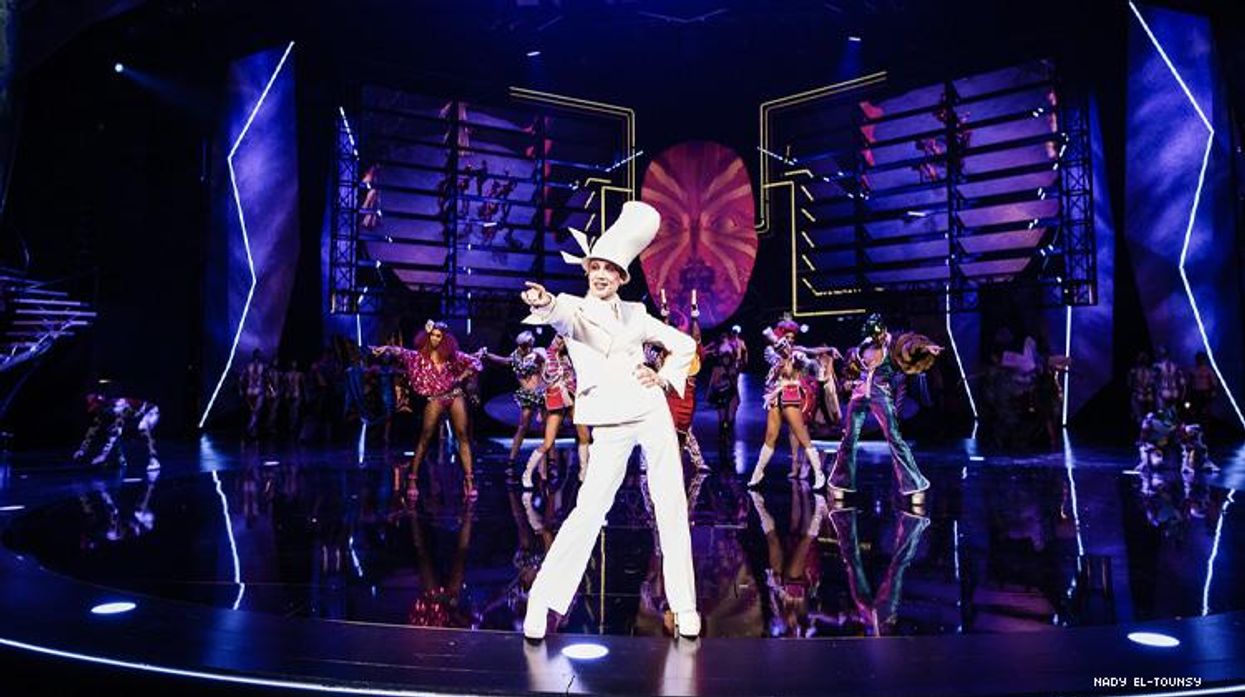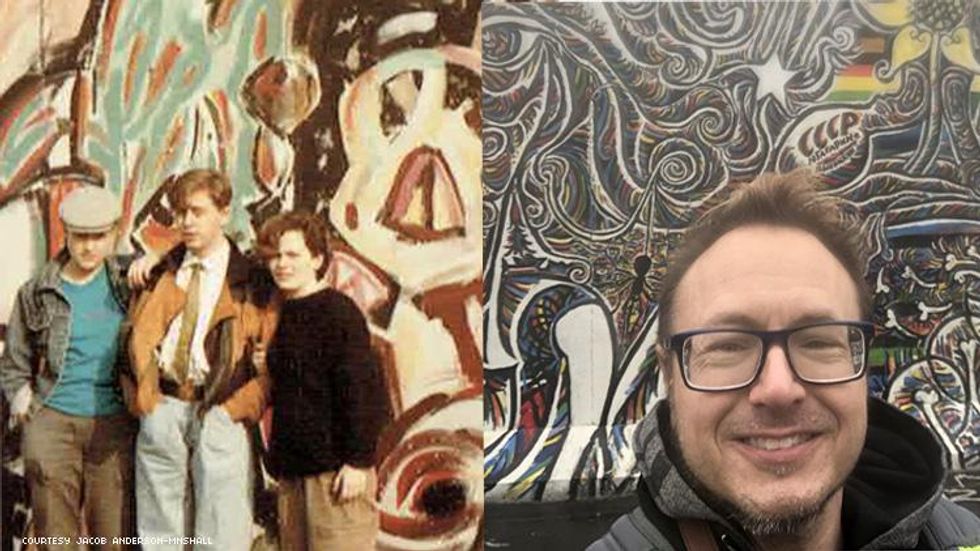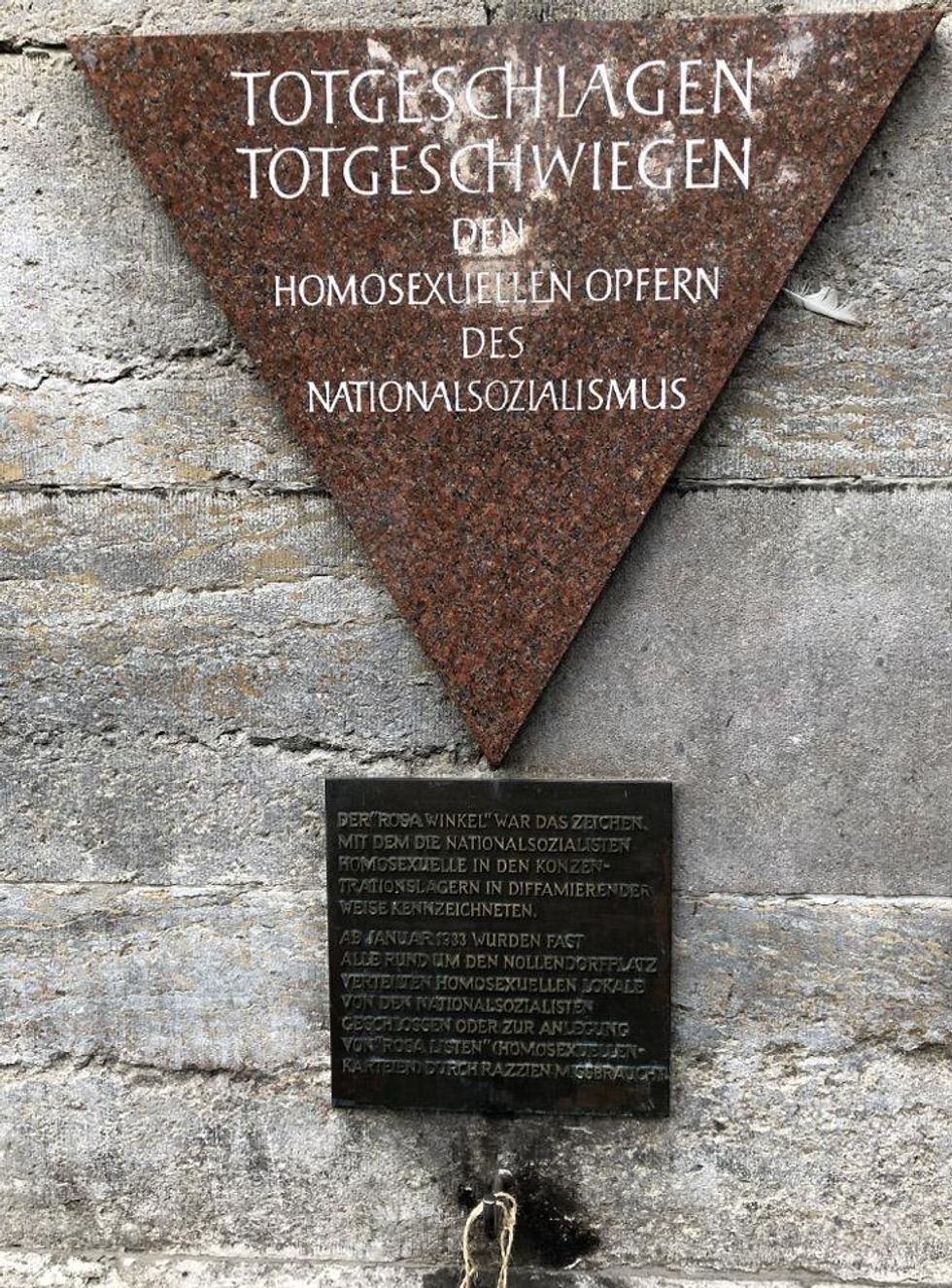Travelogue
Exploring Berlin's Very Queer Contradictions

Berlin is more German than it was 35 years ago. But has that made it less LGBTQ+-friendly?
October 09 2020 2:00 AM EST
By continuing to use our site, you agree to our Privacy Policy and Terms of Use.

Berlin is more German than it was 35 years ago. But has that made it less LGBTQ+-friendly?
East German soldiers boarded the bus carrying AK-47s. My stomach clenched. It was March 1985. I was 17, on a bus full of American teens. My instinct was to sit quietly and stare at my feet. From the back of the bus Bruce Springsteen’s “Born in the U.S.A.” suddenly blared from a boombox.
We were at a checkpoint deep in communist East Germany. There were 100 of us on the trip, two high school seniors from every state in the nation who had spent the last nine months in big and small towns across West Germany as part of the Bundestag-Congress student exchange program. Despite representing the conservative state of Idaho, I was one of the more shall we say, eclectic, kids.
I had not yet come out as queer, but in mere hours I would let another girl tie me to a broken hostel bed. Yet, this apparent act of musical rebellion on the bus, far from the freedoms we’d all grown up taking for granted, didn’t strike me at the time as brave. It seemed stupid. First, for risking irritating men with rifles who had the power to imprison us — and were predisposed to dislike spoiled Americans — and second because “Born in the U.S.A.” was hardly the full-throated celebration of U.S. capitalism the white boy who played it apparently thought it was.
The soldiers did nothing. They were young enough to secretly appreciate rock music. In four years, they could be among those who welcomed the fall of the Berlin Wall. Our bus continued on to what was then the divided city of Berlin, where we spent a week and took numerous jaunts to the East side. The lasting impression of East Berlin at that time was a drab grey. Everything was grey. The skies were overcast, the clothing was dowdy and faded, the buildings were dingy, the exhaust puffing from back of the ubiquitous Trabbis (East German cars) was grey, the east side of the Berlin Wall was grey cement. East Berlin was all grey.
It contrasted sharply from the bright and colorful graffiti that covered the west side of the Wall as well as the leather punks and the pop culture icons (David Bowie, Depeche Mode’s leather-and-skirt-wearing Martin Gore) who made West Berlin home in the 1980s. Lesbian photographer Cornelia Kurtew who spent time in East Berlin before the fall of the Wall characterizes traveling from West to East Berlin as the reverse of Dorothy’s trip to Oz: you moved from technicolor to black and white as you crossed through Check Point Charlie.

In 1985, I could barely acknowledge to myself my attraction to girls and, still female-identified, my awareness of my gender difference was rudimentary. It was more a physical discomfort with “girl” clothes and a deep longing for boys clothing and a more masculine presentation, than something intellectually articulated.
Back then I didn’t know who Dr. Magnus Hirschfeld was or how 70 years before my Berlin trip, he helped usher in another, even more permissive and progressive era. His Institute for Sexual Science, opened in 1919, eventually employed dozens of people doing research, sexual counselling, treatment of sexually transmitted infections, and public sex education. The Institute housed the main offices of both the Scientific Humanitarian Committee (the first queer organization) and the World League for Sexual Reform — and became the site of the world's first gender affirmation surgery for a transgender person. The Roaring Twenties, the decade between the wars, was the height of LGBTQ+ culture in Berlin.
For conservatives offended by Berlin’s permissiveness, the Institute symbolized everything they hated, and it was quickly defamed and denounced as “Jewish,” and “offensive for public morals,” by the bourgeoning Nazi movement. In 1933 the Institute was sacked and Hirschfeld’s irreplaceable archive destroyed.
By the end of World War II, Berlin itself would suffer a similar fate at the hands of the Allies, who left roughly 90 percent of the city in ruin. The once great capital was portioned into Soviet, American, British, and French zones of occupation. In 1961, the Soviet-aligned East Germany began building the barrier that would become the Berlin Wall.
In 2019, a hundred years after the founding of Hirshfeld’s Institute, I was on hand as a reunified Germany celebrated the 30th anniversary since that Wall was itself torn down in a peaceful revolution. The brick and concrete edifice may have fallen three decades ago, but in many ways the wall between those from East and West Germany still exists.
In my first visit to Berlin since 1985, I met Mark, a straight tour guide who moved to Berlin from New Zealand, the country where his parents fled to from East Germany after the Wall fell. His father had been a member of East Germany’s hated and feared State Security Service, best known as the very repressive Stasi secret police. As party loyalists, their family had certain privileges — even everyday East Germans were guaranteed a home and a job, advantages no longer available after reunification. Mark remembers that after the Wall fell, West Germans came in and bought up everything, raising once rent-controlled rents exorbitantly. Some Germans made millions through reunification. Few of those Germans came from the east. Germans from the west today are more likely to marry someone from another country than to wed someone from what was once East Germany.
The Berlin I experienced in 1985 was more regressive than the Berlin of the 1920s. And yet I would discover the still-walled Berlin of 1985 was, in many ways, more open, inclusive, and queer than the reunified German capital is now.
Today, visiting sites of that lost Berlin, the Berlin of the early 20th century, when the LGBTQ+ community thrived, comes with a deep sense of melancholy for what was lost. You cannot hear of the Cabaret-inspiring queer shenanigans of cross-dressing lesbians and gay men without thinking of what was to come under the Nazi regime: the destruction of the Institute for Sexual Science, the burning of extensive historical documentation of our queer and trans existence. And of course, the ultimate horror, the Holocaust; the millions dead, killed simply for being Jewish, queer, transgender, disabled — or otherwise different.

To be a queer, disabled, trans American visiting these places in 2019, at a moment in our own nation’s conservative uprising, was to be struck with the fear of what could follow, of what Trump may have wrought, of how trans people are being weaponized in bathroom wars, of how our differences are once again being used as justification for stripping away our rights or subjecting us to violence. Looking into the fires of Berlin’s past offer terrible visions of a dark American future.
Yet, Berlin in 2019 was also inescapably a moment of hope. Afterall, the Berlin Wall fell. When young people share their fears for the future, I agree that things look grim. But I also know that 35 years ago I did not believe the Berlin Wall would come down in a bloodless revolution or that Germany’s citizens would be allowed to reunite.
The Berliners I spoke with in 2019 shared their concerns about lesbian bars closing, about an absence of LGBTQ+ role models, about gay neighborhoods ceasing to be queer when the older gay men — who are the only LGBTQ+ people who can afford to remain there — pass away. Time builds up and tears down. But is the Berlin queer community waning or waxing?
Many gay men in the German capital told me that being gay was “totally hot right now” in Berlin, that the queer clubs and parties are the hottest in town, and bouncers eagerly usher gay men into exclusive events while turning away straight folks, because gay men are valued for what they can bring a venue.
Admittedly, there is also something creepy about this reliance on stereotypes and embrace of queers only when they are seen as providing a value. It’s a little like someone hiring a Jewish accountant because they believe Jews are better with money. What happens when those same assumed traits are no longer seen as an asset? When gays — like Middle Eastern immigrants currently — are instead seen as a burden or problem? What solution will Germany turn to then?
Berlin is home to the nation’s first shelter for gay refugees. It’s a center that was born out of necessity: According to the German news source Deutsche Welle, “The city of Berlin revealed that in 2016, there were more than 300 violent attacks on LGBTI refugees.” Schwulenberatung Berlin, a prominent LGBTQ+ charity founded in 1982, opened the Berlin center in 2016, providing housing and services for up to 120 people.
On Berlin street corners, moments in time collide in disorienting ways for me. It feels like Germany’s past, America’s present, and the world’s possible futures are all bumping against each other as if there’s a fold in the fabric of space-time here and it’s all gotten jumbled together. Am I here in 2019, 1919, 1985, 2085? Is this Germany in the 1930s or America in the 2020s? What is the world on the cusp of?
The historical tensions within Germany, which helped fuel the rise of the Nazis in the wake of the Roaring Twenties are still simmering beneath the surface. Today, attacks against lesbian, gay, bisexual, transgender, and intersex Germans are on the rise; the federal government reported last year that these attacks had nearly doubled between 2013 and 2019.
The role the queer community plays in Berlin as both the city’s most enticing peek into freedom from the constraints of German society and a cautionary tale about a society with unlimited freedoms is much like that of New Orleans’s French Quarter: tourists flock there to let loose, but eventually return to their staid lives in middle America.
Perhaps this is no more apparent than in Berlin’s Cirque du Soleil-esque revue Vivid: Grand Show (performed at the Frierichstadt-Palast theater and extended through summer 2021), a gender-bending exploration of sexual freedom, featuring acrobatics, dance, contortion, and elaborate musical numbers (and endless costume changes from gimp suits and spandex leather to men in skirts and women in jackets with beards and bowties). Vivid opens with calls to “let out your inner animal,” and the question, “Who are you when no one is looking?” (It’s worth noting that a few miles away and just over three decades ago, the Stasi, East Germany’s secret police, were always watching. Self-censorship, even in one’s own home, became a survival impulse for many East Germans.)
In Vivid, real-life queer performers perform queerness for straight and buttoned-down audiences (male audience-members literally dressed in three-piece suits), giving them the voyeuristic pleasure of watching the extravagance, the sexual freedom, the diversity of gender expressions without ever having to incur the risks and costs that LGBTQ+ people (including those on the Vivid stage) still face in German society. Watching this spectacle gives straight people permission to loosen their strictures with the understanding that most will dip a toe but never dive in; in fact, to really let go of their inhibitions would simply feel like “too much” or “over the top” for most Germans.
Indeed, the Vivid show (and queer culture) also serves as a cautionary tale for Germans of what happens when daily societal constraints are loosened too much. The phrase repeated at the end of the show, “Sometimes less is more” justifies an extremely limited embrace of the queerness and diversity that has just been revealed by the performers. And it reflects a concern about “too much freedom,” a fear that too much societal permissiveness leads to anarchy.
Even those in Berlin’s queer community can express similar sentiments.
“If you push harder, change is less possible,” one lesbian mom in the hospitality industry tells me. She and her partner had to get sperm from Denmark and their second-parent adoption required them to undergo physical and psychological evaluations. There are resources in Berlin for queer parents — including schools established by and for same-sex parents. But this mom asks, “Why would I send my child there instead of to the city’s best schools?”
In 1985, there was nowhere I wanted to be more than in Berlin. I sobbed on the flight home to America. I spent much of the next five years plotting how to get back. Instead I fled Idaho, my home state, first for New Orleans and then the San Francisco Bay Area. California, and, for a time, Portland, Ore., were welcome refuges. Still, since 2016, seeing the direction our nation has gone under Trump, I admit to feeling that perhaps another country would be more accommodating. I thought often of Berlin.
My 2019 visit to Berlin felt much longer than it actually was. It was long enough for me to cycle from an instant and overwhelming sense of homecoming, to considering Berlin a viable option post-election 2020 (if the worst happens), to a firm unshakeable conviction that I do not want to live in today’s Germany, not even in its most progressive city. Like Idaho, it’s a great place to visit, but I don’t want to be the person I’d have to be to thrive there.